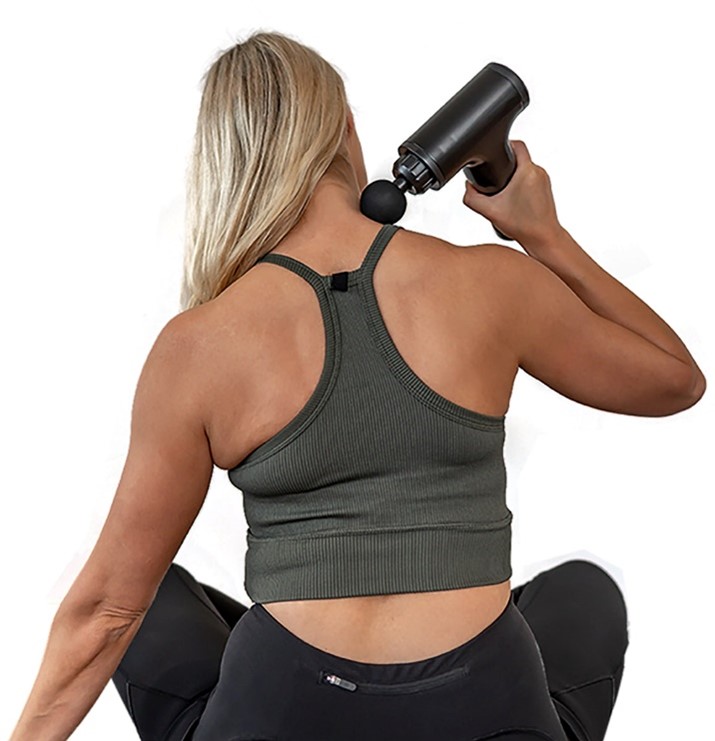
Percussive therapy, also known as percussion therapy or vibration therapy, is a technique that utilizes rapid and repetitive movements to target specific areas of the body. This therapy involves the use of a handheld device, such as a massage gun or percussion massager, which delivers rapid pulses or vibrations to the muscles and soft tissues.
Here’s a brief explanation of how this therapy works on the body:
Increased blood flow:
The rapid pulsations or vibrations generated by the percussive device help to stimulate blood circulation in the targeted area. This increased blood flow brings fresh oxygen and nutrients to the muscles, while also aiding in the removal of metabolic waste products. Improved circulation can promote tissue healing, reduce inflammation, and accelerate recovery after physical activity or injury.
Muscle relaxation:
Percussive therapy can help relax tense muscles and alleviate muscle soreness. The rapid vibrations penetrate deep into the muscle tissues, stimulating sensory receptors and interrupting pain signals. This can lead to a reduction in muscle tension and a release of muscle knots or trigger points. The relaxation of muscles can improve flexibility, range of motion, and overall muscle function.
Pain relief:
The percussive action of the therapy device can help alleviate pain by stimulating the release of endorphins, which are the body’s natural painkillers. The vibrations also help to desensitize the surrounding nerves, reducing the perception of pain. This makes percussive therapy particularly beneficial for individuals experiencing chronic pain, muscle spasms, or discomfort from injuries.
Breakdown of scar tissue and adhesions:
Percussive therapy can help break down scar tissue and adhesions that may have formed in the muscles or soft tissues due to injury or repetitive stress. The rapid vibrations help to disrupt the fibrous tissue, promoting the remodeling and realignment of collagen fibers. This can improve tissue flexibility, reduce stiffness, and enhance overall tissue health.
Neural stimulation:
Percussive therapy can stimulate the nervous system, promoting a relaxation response and reducing stress and anxiety. The vibrations can help calm the sympathetic nervous system, which is responsible for the body’s “fight or flight” response, and activate the parasympathetic nervous system, which promotes relaxation and restorative processes.
Enhanced recovery and performance:
By improving blood circulation, reducing muscle tension, and promoting tissue healing, percussive therapy can aid in post-workout or post-injury recovery. It can help reduce muscle soreness, speed up recovery time, and enhance athletic performance. Regular use of percussive therapy can also help prevent muscle imbalances and injuries by maintaining muscle health and flexibility.
So, let’s hit it home. Percussive therapy works on the body by increasing blood flow, relaxing muscles, relieving pain, breaking down scar tissue, stimulating nerves, and promoting recovery. This technique offers a non-invasive and convenient way to address muscle tension, soreness, and various musculoskeletal conditions. However, it is important to use percussive therapy devices properly and consult with a healthcare professional if you have any underlying health conditions or concerns.
Wells Elite Mindset And Fitness



